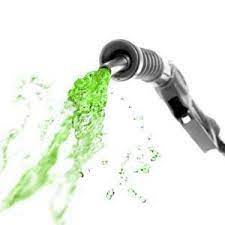Agreement to suspend relief on fuels is the cause, even with higher prices at pumps
12/29/2022

The end of the fuels relief is expected to immediately cause a slight improvement in the competitiveness of hydrous ethanol and in the remuneration of the mills. However, mills are still likely to continue preferring to produce sugar in the next harvest (2023/24) and may only increase ethanol production because of the larger amount of cane expected for the next cycle.
The social taxes PIS/Cofins and federal tax Cide rates that were levied on fuels in May will return to the same levels in January. However, the future minister of Finance, Fernando Haddad, left the door open for a reevaluation of the tax policy during the beginning of his tenure. For now, gasoline sold at service stations will again be taxed at R$0.6869 per liter, while hydrous ethanol will be charged R$0.2418 per liter.
In January, the liter of gasoline (which has a 27% mix with anhydrous ethanol) is likely to increase by almost R$1 liter at the pumps, while hydrous ethanol may rise by R$0.69 a liter, according to calculations by consultants FG/A. These hikes are still expected to keep gasoline economically more advantageous for flex-fuel car drivers, since the correlation between the two fuels should continue well above 70% (the level at which the two are equally competitive), going to 75.5% from 76.7%.
Whatever ultimate solution the administration of Luiz Inácio Lula da Silva decides to take regarding fuel taxation, there is now a constitutional provision, passed by Congress in July, which imposes that the rates on biofuels must be proportionally lower than on fossil fuels.
As the mills in the Central South are in the off-season, the changes in prices do not immediately impact the supply since the cane crushing will only be resumed in April. If taxes are kept at the same rates throughout the year, the tendency is for ethanol to regain competitiveness with gasoline throughout the harvest, since cane crushing will also be greater and will guarantee raw material for an increase in production, according to João Rissi, a partner at FG/A.
The consultancy estimates that the supply of hydrous ethanol available for the domestic fuel market will grow by 17.4% next season, to 14.5 billion liters. In a recent release, consulting firm StoneX projected an 11.4% increase in production, to 19.6 billion liters.
The increase in ethanol production is expected to happen even in a scenario where sugarcane mills tend to maximize the production of sugar. The consultants’ perspective is that the commodity will continue to offer a more favorable remuneration than ethanol, even in a scenario of increased biofuel prices with the end of tax waivers. “The tightness in the physical sugar market is expected to ensure sustained prices,” says Mr. Rissi.
Even if tax normalization is maintained for the next harvest, sugar is likely to guarantee a 10% higher remuneration than ethanol, according to FG/A’s estimates. Sugar is currently offering a 28% premium over ethanol, according to calculations by financial company BTG. In the average of this harvest, the sugar premium should be around 15%, according to FG/A.
According to the consulting firm, the average price of hydrous ethanol for mills may reach an average of R$2.98 a liter (net of taxes) in the next harvest, given the new tax scenario — in the current harvest, the average price of hydrous ethanol received by mills in São Paulo until last week was R$2.91 per liter, according to the Cepea/Esalq indicator.
However, a major ethanol trader said on condition of anonymity that Petrobras’ new pricing policy could alter these prospects and have “the same effect as a zero tax.”
*By Camila Souza Ramos — São Paulo
Source: Valor International
